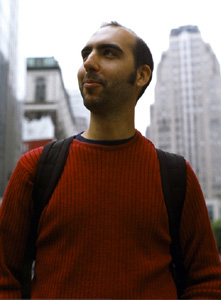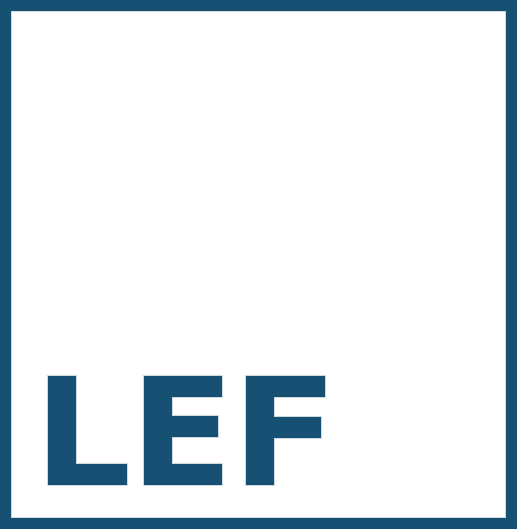
Filmmaker Jeff Silva is finishing his most recent film, IVAN & IVANA.
LEF Program Manager Sara Archambault caught up with him to discuss the film and Jeff’s approach to this very personal, character-driven story.
SARA: IVAN & IVANA is a very intimate profile of 2 good friends of yours. What were the challenges of making a film about people you care about so deeply?
JEFF: Making a film with real people is fraught with constant emotional and ethical conflicts and I had my share in making “Ivan and Ivana”. There is something truly absurd about recording hundreds of hours of people’s lives over many years and then somehow condensing it into a digestible 90 minute story that makes sense and keeps everyone engaged. Fiction seems so appealing and less risky after making “Ivan and Ivana”, but there is a reason why documentaries are sometimes so powerful, in that they have the potential to capture the essence of our humanity in a way that I believe a fiction film cannot as easily achieve.
Over the many years of shooting the film Ivan and Ivana go through a series of painful circumstances that I could have never anticipated when I began working on this film. It is difficult to see anyone struggling and even harder when they are dear to you. I tried my best to make a compassionate and honest portrait of two people undergoing tremendous life changes in spite of the emotional and ethical challenges, because I feel strongly that their unique individual experiences somehow communicates larger more universal issues affecting our world.
SARA: How were you able to separate Jeff the filmmaker from Jeff the friend, or did you think it served the film better to collapse the two?
JEFF: Since the beginning, Ivan and Ivana have only known me as “Jeff their filmmaker-friend”. My identity and relationship to them has always been defined as their pal with the added appendage of the camera constantly attached to him. I am at once part of the filmmaking process but I am also deeply engaged in the lives of both of them on and off camera. So it never made sense to separate the two, and in a way, this conflicting relationship between filmmaker and friend that you mention is an essential part of what defines my aesthetic and my methodology that is as participatory as it is observational. Because of this method, I end up becoming a third character in the film, and I think that my role in the film, as it is in real life, is to be a “friend-filmmaker” to both Ivan and Ivana.

SARA: What inspired you to follow their story?
JEFF: There is something special about Ivan and Ivana in the way they pull you in to their lives. They lived through a harsh war and lost everything, yet they are filled with vibrant energy, irony and a profound understanding of the world that I don’t see in most people.
I should tell you though that initially I was not planning on making a film about Ivan and Ivana but rather was trying to finish my previous film “Balkan Rhapsodies” when I first began filming them in earnest in 2006. “Balkan Rhapsodies” is a much more experimental documentary portrait of post-war Serbia and Kosovo that I piece together from 78 film fragments I had recorded or collected about the warn-torn region between 1999-2005. In fact, Ivan makes a short appearance in “Balkan Rhapsodies”, playing his guitar and talking frankly about life in Kosovo in what I consider to be one of the most memorable moments of the film. A small sliver of that powerful footage from New Years 2000 is actually part of the prelude to IVAN AND IVANA. We met by chance in Pristina and he drove me to Gracanica so I could film the beautiful 14th century monastery there. It was the first time I had ever met Ivan and yet on that journey we somehow connected on a deep level that led to our lasting friendship.
Six years later, I was still struggling to finish “Balkan Rhapsodies” while Ivan and Ivana had long since fled Kosovo for California. I was long overdue to visit them in San Diego so I decided to bring my camera with me on the off chance that I might be able to weave a new episode into “Balkan Rhapsodies”. However, after a few days together it became evident that this footage would have to become its own new project. The juxtaposition of their lives in Kosovo to San Diego along with the new cultural and financial challenges that they faced felt to me as if they were living in some simulation of a movie, and so I decided to make a documentary that reflected that situation and the mythology of the American Dream.
SARA: What was your most challenging shoot? Why?
JEFF: Their separation in 2008 was a shock to me and it was emotionally the hardest moment for me to come to terms with. Before then I thought I was making a film that would explore the trials and tribulations of their shared American journey with their debt being the central focal point, but at the moment they separated the film also needed to turn in a new direction. Everything changed, from how I coordinated visits with each of them to how and I filmed. It was a very sensitive time for them both and I tried to be neutral and the best friend I could for both while I continued filming. I certainly didn’t want to exploit their painful situation and I struggled while filming and also while editing to be as sensitive as possible. In the film, as in real life, you never really get full resolution of why they separated because, as we all know, break-ups are never so simple.
SARA: How does this film fit with your past work, or is this a new direction?
JEFF: Aesthetically speaking, I’ve always been inspired by the endless possibilities of the moving-image, with its incredible potential to activate and engage with our senses. My background before this project was as an experimental film and installation artist, so it surprises even me that I’ve made a rather straightforward documentary film. The filmed material is so driven by Ivan and Ivana’s extraordinary presence and the revelations and experiences they undergo. It seemed only natural while editing to let the film unfold in a somewhat linear fashion. In terms of new directions, I’ve certainly developed a more nuanced relationship between the formal aspects of a film and its content and I think that this project achieves that balance better than any of my previous works. Each project requires its own delicate conceptual and aesthetic dance, and so it looks as though my next non-fiction project will likely be driven by an essayistic voice-over narration, and beyond that I am also planning to make a feature length fiction film.

